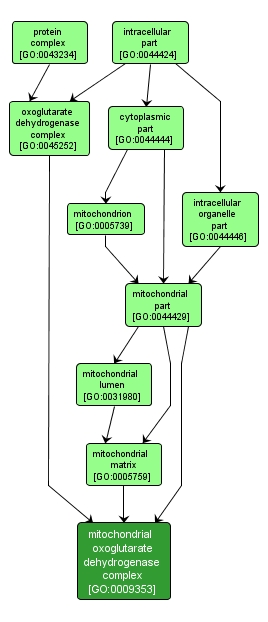| Desc: |
A complex of multiple copies of three enzymatic components: oxoglutarate dehydrogenase (lipoamide) ; EC:1.2.4.2 (E1), dihydrolipoamide S-succinyltransferase ; EC:2.3.1.61 (E2) and dihydrolipoamide dehydrogenase ; EC:1.8.1.4 (E3); catalyzes the overall conversion of 2-oxoglutarate to succinyl-CoA and carbon dioxide (CO2) within the mitochondrial matrix. An example of this complex is found in Mus musculus. |














